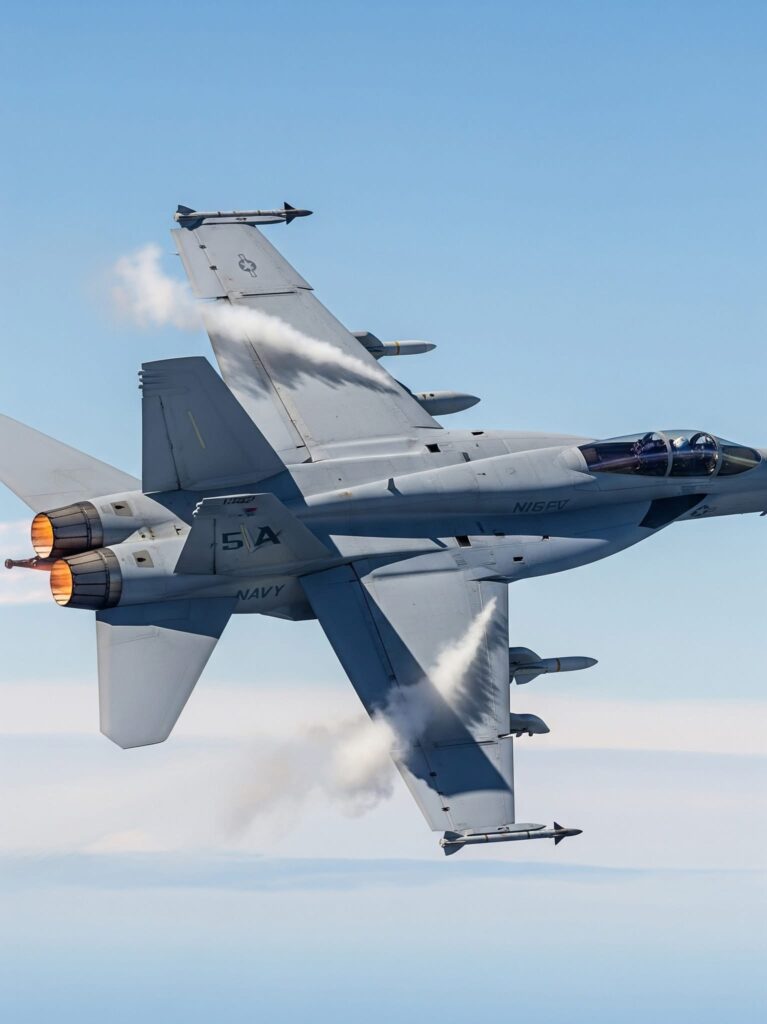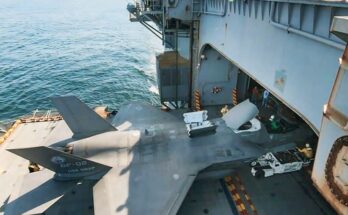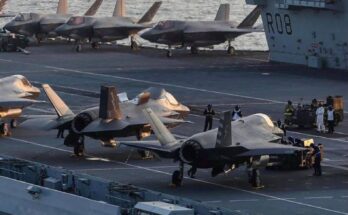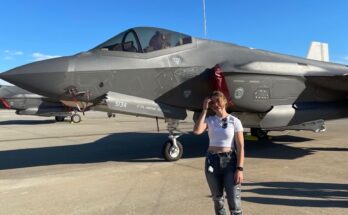
The Boeing F/A-18E/F Super Hornet is a carrier-based multirole fighter aircraft that serves as one of the backbone platforms of the United States Navy. Developed as an advanced derivative of the original F/A-18 Hornet, the Super Hornet entered service in the late 1990s, providing improved range, payload capacity, and survivability compared to its predecessor. Its design and versatility allow it to fulfill a wide spectrum of missions, including air superiority, strike operations, close air support, reconnaissance, and aerial refueling.
The Super Hornet comes in two primary variants: the single-seat F/A-18E and the two-seat F/A-18F. While the E-model is often deployed for strike and air defense missions, the F-model adds a second crew member, usually a weapons systems officer, who manages sensors, targeting systems, and mission coordination. This flexibility gives the Navy the option to tailor the aircraft to different operational needs without sacrificing overall capability.
One of the key advantages of the Super Hornet is its size and performance enhancements over the earlier Hornet. The airframe is approximately 25 percent larger, which translates to increased fuel capacity and extended combat radius. This extra range is critical for naval aviation, as carrier-based fighters often need to project power far from their home ships. The aircraft is powered by two General Electric F414-GE-400 turbofan engines, providing high thrust and reliability. These engines, combined with aerodynamic refinements, allow the Super Hornet to achieve speeds of Mach 1.8 and operate effectively in both air-to-air and air-to-ground roles.
Survivability has also been a central focus in the Super Hornet’s design. The aircraft incorporates reduced radar cross-section features to make it less detectable to enemy systems, though it is not a stealth aircraft in the same category as the F-35. Additionally, advanced avionics, electronic warfare systems, and countermeasures enhance its ability to operate in contested environments. The two-seat F/A-18F variant, when equipped with specialized pods, can also serve as the EA-18G Growler, an electronic attack aircraft dedicated to jamming enemy radar and communications.
In terms of weapons, the Super Hornet is highly versatile. It is equipped with an internal M61A2 20mm cannon and can carry a wide variety of ordnance on its eleven external hardpoints. This includes air-to-air missiles such as the AIM-9 Sidewinder and AIM-120 AMRAAM, as well as precision-guided bombs, standoff missiles, and anti-ship weapons. The aircraft’s ability to adapt to evolving weapon systems ensures its continued relevance as technology advances.
Operationally, the Super Hornet has proven itself in multiple conflicts since its introduction. It has participated in missions ranging from enforcing no-fly zones to precision strike campaigns in Iraq, Afghanistan, and Syria. Its blend of reliability, multirole flexibility, and carrier compatibility has made it indispensable to the U.S. Navy and attractive to international customers.
Looking ahead, while the F-35C is joining the Navy’s carrier air wings, the Super Hornet remains a vital workhorse. Ongoing upgrades, such as the Block III configuration, extend its service life with improved avionics, networking capabilities, and reduced radar signature. These enhancements ensure that the Boeing F/A-18E/F Super Hornet will continue to serve as a cornerstone of naval aviation for years to come.


